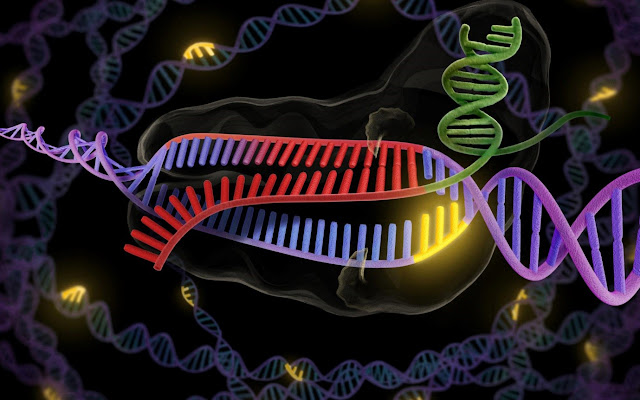The CRISPR And CAS Gene System Has Emerged As A Transformative Force In The Field Of Genetic Modification
 |
| CRISPR And CAS Gene |
CRISPR-Cas9, which stands for Clustered Regularly Interspaced
Short Palindromic Repeats and CRISPR-associated protein 9, is a revolutionary
gene editing technique that has sparked immense excitement and potential in the
field of genetic engineering. Since its discovery in 2012, CRISPR-Cas9 has
undergone significant advancements and refinements, opening up new
possibilities for precision genome editing and transformative applications in
various fields such as medicine, agriculture, and biotechnology.
At its core, CRISPR And CAS Gene utilizes a
two-component system: the Cas9 protein, which acts as the molecular scissors,
and a guide RNA (gRNA), which directs Cas9 to the target DNA sequence. The gRNA
is designed to recognize and bind to a specific DNA sequence complementary to
its own sequence, while Cas9 cuts the DNA at that site. Once the DNA is cut,
the cell's repair machinery can introduce desired changes, such as gene
insertion, deletion, or modification.
One significant advancement in CRISPR-Cas9 technology is the
improvement in its delivery methods. Initially, the delivery of Cas9 and gRNA
into target cells proved to be challenging, but researchers have made
significant progress in developing efficient delivery systems. Viral vectors,
such as adeno-associated viruses (AAVs) and lentiviruses, have been utilized to
deliver the CRISPR components into a wide range of cell types, including
difficult-to-transfect cells. Non-viral delivery methods, such as lipid
nanoparticles and electroporation, have also been optimized to enhance the
efficiency of CRISPR-Cas9 delivery.
Another crucial development is the expansion of CRISPR And
CAS Gene beyond the Cas9
nuclease. Researchers have discovered and characterized additional CRISPR
systems, each with its unique features and capabilities. For example, the
Cas12a (formerly known as Cpf1) system has been identified as an alternative to
Cas9, offering distinct advantages, including its ability to recognize a
different target sequence and generate staggered DNA cuts. Cas12a is also
smaller than Cas9, allowing for more compact delivery systems. Other Cas
proteins, such as Cas13 and Cas14, have been harnessed for RNA editing and
nucleic acid detection, further broadening the range of applications for CRISPR
technologies.



Comments
Post a Comment